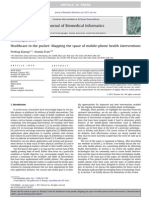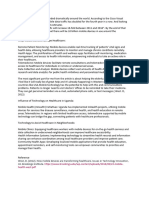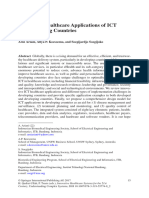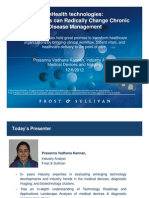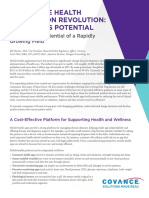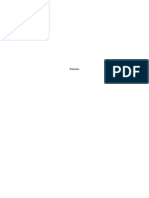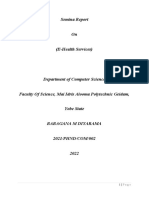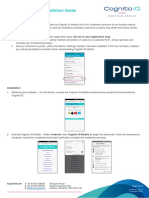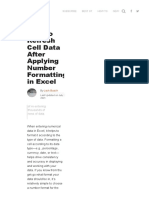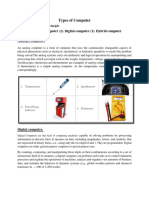0% found this document useful (0 votes)
54 views24 pagesGHCVH
This document is a seminar report submitted by Vysakh S. that examines the influence of smartphones in healthcare. It discusses how smartphones have revolutionized healthcare by enabling remote health monitoring, immediate access to care, digital payments and records, and access to a wide variety of healthcare apps. The report also describes how smartphones can collect health data through body area networks, GPS sensors, and SMS messages. It provides details on commonly used healthcare apps and the development of an app for ambient assisted living as part of an EU research project called eCAALYX. Finally, it briefly discusses barriers to adoption of health apps such as cost, network issues, usability, and privacy concerns.
Uploaded by
Arjun BalaramanCopyright
© © All Rights Reserved
We take content rights seriously. If you suspect this is your content, claim it here.
Available Formats
Download as PDF, TXT or read online on Scribd
0% found this document useful (0 votes)
54 views24 pagesGHCVH
This document is a seminar report submitted by Vysakh S. that examines the influence of smartphones in healthcare. It discusses how smartphones have revolutionized healthcare by enabling remote health monitoring, immediate access to care, digital payments and records, and access to a wide variety of healthcare apps. The report also describes how smartphones can collect health data through body area networks, GPS sensors, and SMS messages. It provides details on commonly used healthcare apps and the development of an app for ambient assisted living as part of an EU research project called eCAALYX. Finally, it briefly discusses barriers to adoption of health apps such as cost, network issues, usability, and privacy concerns.
Uploaded by
Arjun BalaramanCopyright
© © All Rights Reserved
We take content rights seriously. If you suspect this is your content, claim it here.
Available Formats
Download as PDF, TXT or read online on Scribd
/ 24






